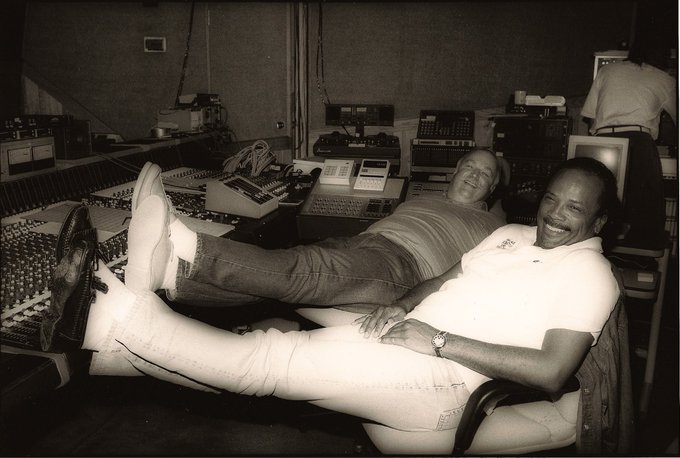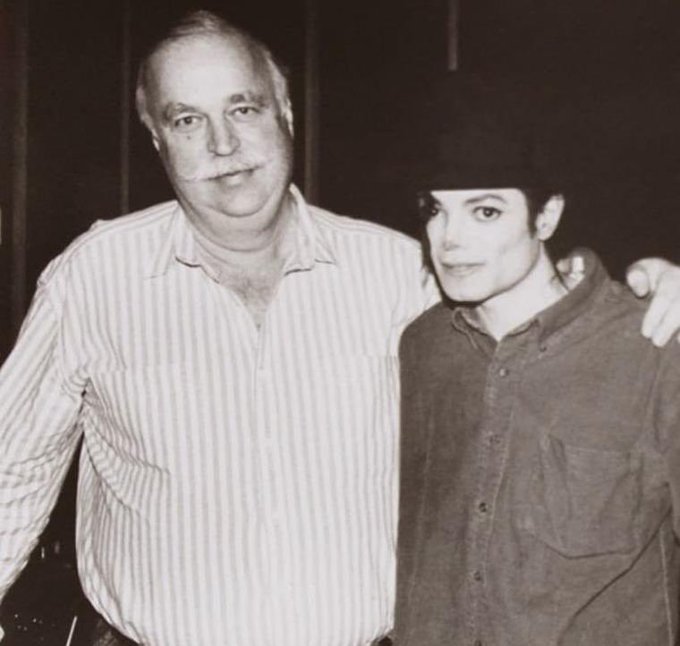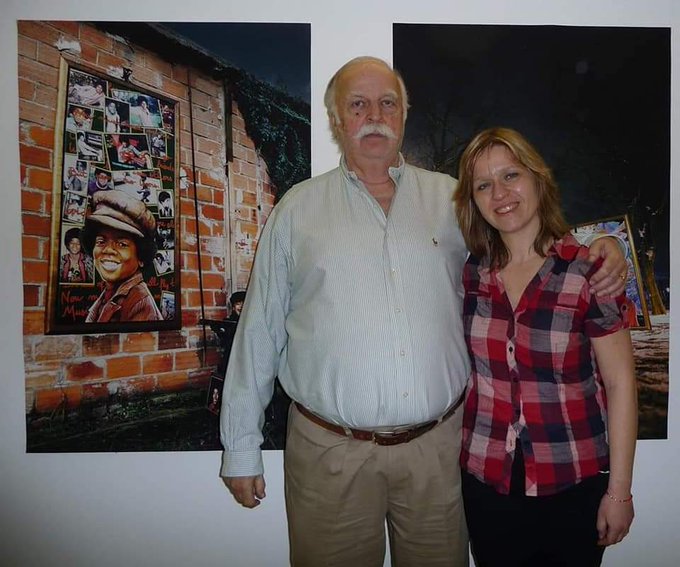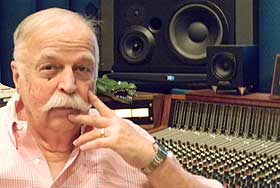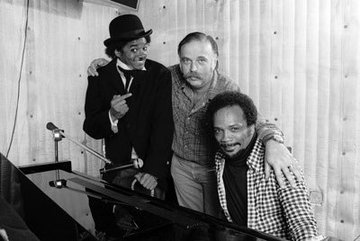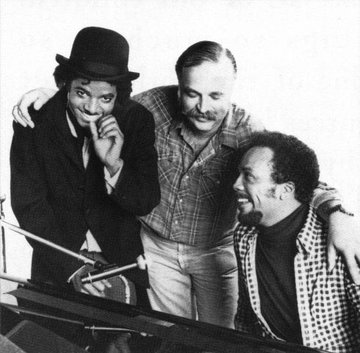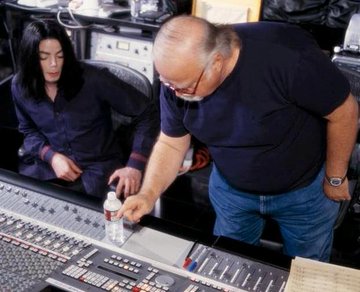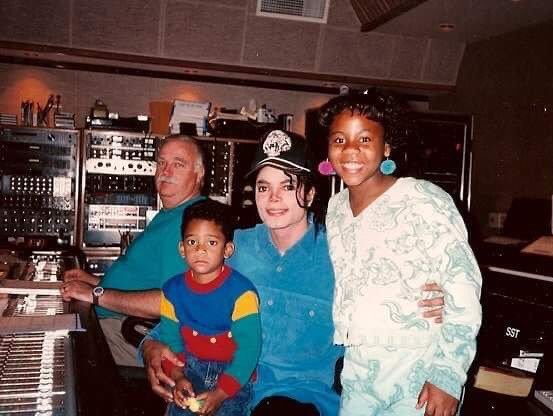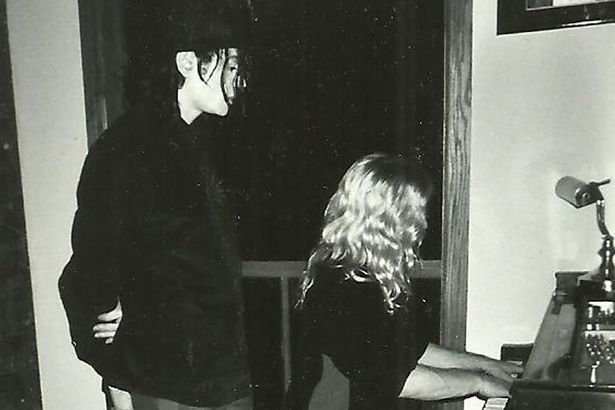https://www.facebook.com/inthestudiowithmj/
Never Be Late
I think it was early on an album called "Decade". Well, that was it's working title - eventually it would be called "Dangerous". I had been working with Bruce Swedien for a while, and maybe I was getting a tiny bit comfortable.
When you work with Bruce you learn to anticipate what he is going to do and what he will need you to do.
You see, I was his Technical Director for several years working with artists like Michael Jackson, Quincy Jones and Barbra Streisand. Small projects.
Some of these albums took nearly a year to complete, followed by dance mixes, international edits, video mixes, etc. The workflow was intense, yet Bruce always maintained a calm, controlled and lighthearted hand on the helm.
The sessions were amazing to be a part of. Bruce was not only a master of getting music perfectly and artfully recorded, but also creating an atmosphere of fun and excitement. When you were in the control room with Bruce, he made it feel like there was no where else on the planet you would rather be. He was the captain of his ship, and his ship was a studio packed with perfectly calibrated tape machines, racks of compressors, EQs, reverbs and de-essers.
The funny thing is Bruce used remarkably few of those tools, rather he simply recorded the sounds with huge dynamics and minimal noise. When you listen to his raw tracks they sound... perfect.
Before we moved into a new studio, one of my many jobs was to painstakingly go through every patch point, console channel and piece of outboard gear and test and calibrate it.
Everything.
This often took days to get a studio fully up to the his standard. Nothing was overlooked. When he touched any given piece of equipment he trusted that I had already tested it to avoid problems during the session.
I found and fixed a lot of problems before he walked in the door, which made the sessions run as smoothly as possible.
So when I say that I could anticipate his next move, those are not just words - that was my job.
When we moved from studio to studio it would take a large cartage truck just for his cases of microphones (I think there were about 15 by my count), and his two giant equipment racks.
Plus the speakers.
And the speaker de-couplers.
And the amplifiers.
And the Hewlett Packard test gear.
And the custom blue and yellow patch cables (Swedish colors).
And the computers.
And the custom fader pack.
And the custom meters.
And the beautiful old tape box that he used to write on the track sheets, filled with personal notes from previous sessions.
It was no small undertaking, but I was good at my job, and I was proud of the music we were working on.
So back to the "Decade"/"Dangerous" project.
We booked a drum session, likely with JR (John Robinson) to lay down tracks on one of the songs. I was at the studio very late the night before, prepping tapes for the song. Bruce never, ever, wants to run out of tracks, so we would prepare work-tapes for each song so we could quickly change the tape and have another blank slate for any given song.
Drum sessions are a lot of work and a lot of fun. Every engineer loves to get drum sounds, as this is part of the fingerprint of their personal sound. Plus, most drummers by nature have a great sense of humor, so I loved drum sessions.
My job, under normal circumstances, was to mic the drums before Bruce walked in the door. I knew which mic to use on each drum, I could place it within a few millimeters of what he wanted, and I would start getting the levels dialed in if he wasn't there yet. I had done it many times, and we almost didn't need to talk about it in advance - he could simply walk in and make his final adjustments, get the sound locked and enjoy a few sips of coffee.
Until this session, when I overslept.
I was never late.
Until this session.
I was late.
I walked into the studio, and there was the legendary Bruce Swedien unrolling mic cables, setting mic stands and placing mics on drums. My job.
I quickly and humbly apologized, but all he said was "We'll talk about this later."
Not what I wanted to hear.
We quietly finished setting the mics, getting sounds, and the session went smoothly.
Bruce joked and laughed and everyone had a great time, like you always do on a Swedien session, except me. I tried to laugh at the jokes, but in my back of my mind I knew "later" was coming.
At the end of the day everyone hugged and packed up and left, and I thought maybe he would forget.
He didn't.
I was rolling up cables and putting mics away and he called him into his "office", the control room.
He looked at me and while I don't remember word-for-word what he said, it was pretty close to this: "Do you have any idea who we work with? We are working with Michael Jackson, the greatest singer on the planet."
He didn't yell.
He didn't raise his voice.
But he was dead serious.
He continued...
"Michael chooses the best people to work with, and that's why we are here. There was no reason for you to be late, and I know it won't happen again. See you tomorrow."
And that was it - he never brought it up again.
We travelled together.
We laughed together.
We shared many meals together.
I prepped countless sessions for him, and he thanked me at the end of every day.
It was remarkable to watch him work, and the ease with which his decades of experience allowed him to handle any situation with the calm demeanor of an experienced admiral.
He was the greatest music mixer I have ever known.
He was a true pioneer in the industry.
He was my mentor.
He was my friend.
And I was never late again.
Rest in peace dear friend, I love you and I am grateful for every moment.
Braddy-Daddy


